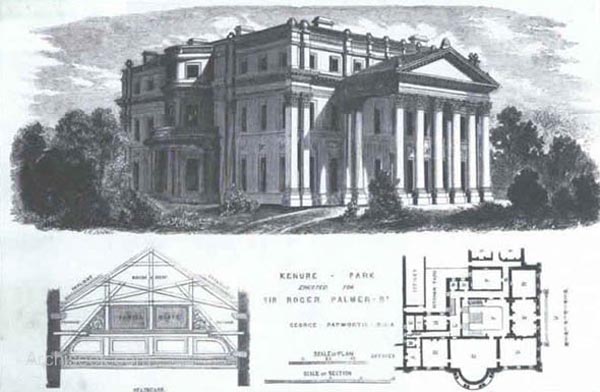Bronze Age
Bronze Age Ribbed Bowl
This Bronze Age ribbed bowl was used in a cremation burial. The story of how it came to be in the Museum is an unusual one.
By Natasha Walsh
Bronze Age ribbed bowl with incised decoration including lozenge motif on the body and cruciform design on base. Cruciform motifs also occur in Bronze Age gold (most iconically in the sun-discs) and may be associated with sun worship.
The original register entry reads: “Food Vessel”
Food vessels, also referred to as Bronze Age bowl tradition vessels, are associated with Bronze Age burials in Ireland. They occur with both inhumed and cremated remains. In this instance the vessel when found contained a small amount of cremated human remains but these remains were likely originally interred alongside the vessel rather than in it.
How did it come to be in our collection?
This vessel has an unexpectedly glamorous movie connection. The story begins in 1965 in Kenure House, Rush, Co. Dublin. This was formerly the home of the Palmer family but had been sold to the Land Commission in 1964, soon after leased to film companies.
In March 1965 the house was used in the filming of The Spy Who Came In From The Cold starring Richard Burton. Miss MacAvin was one of the first of the crew to enter the building and, on the mantelpiece discovered this vessel still containing its cremated human remains from the Bronze Age! Miss MacAvin, fearing for the safety of the object during the course of filming, brought it home with her and contacted the National Museum.

Fig. 2: Drawing of Kenure House
About the Finder
Josie MacAvin worked as the set dresser in The Spy Who Came In From The Cold and was nominated for an Academy Award for Set Design for her work on this movie. She had a very distinguished career having previously been nominated for her work on the 1963 movie Tom Jones. She would later win the Oscar for Set Design for the movie Out of Africa starring Meryl Streep and Robert Redford. Her success was not confined to movies, she also received an Emmy for her work on the 1995 television mini-series Scarlett.
How did the vessel end up on the mantelpiece?
Upon receiving the vessel, the museum embarked on some detective work to ascertain its origin. The museum contacted Colonel Palmer who came in to examine the vessel. Unfortunately, he had no recollection of it being in his household and was unable to provide any information on the matter.
Further work was carried out. Files and publications about finds in the area were consulted. In a file for a similar vessel found in the townland of Rush in 1934 S. P.Ó Ríordáin wrote the following:
“William McGuinness’s grandfather found a similar food vessel in the field to the east of the cairn – in a grave at that time covered by a monument. It is possible that this vessel is in the possession of:
Lieutenant-Colonel R. Fenwick Palmer, Rush and Cefn Park, Wrexham, North Wales”.
This seems an unlikely coincidence and the logical leap was taken that the vessel located in the Palmer’s former family home in 1965 is the same vessel that was in the possession of Lieutenant-Colonel R. Fenwick Palmer. The cairn mentioned by Ó Ríordáin near which the vessel was found was Knocklea passage tomb (also known as Giant’s Hill).
Sadly, neither the original burial site where the vessel was interred for thousands of years, nor the nearby tomb site of Knocklea have been preserved; both being mostly destroyed in the 19th Century. Similarly, its more recent home of Kenure House was demolished in 1978, only thirteen years after Miss MacAvin’s rescue. Remarkably, and this is due in large to Miss MacAvin’s interest in the piece, it survived and continues to be cared for by the National Museum.
Read More…
-
Herity, M. 1974. Irish Passage Graves: Neolithic Tomb-Builders in Ireland and Britain 2500 B.C. (Irish University Press, Dublin).
-
Waddell, J. 1976. Cultural interaction in the insular Early Bronze Age: some ceramic evidence’, in S. De Laet (ed.), Acculturation and Continuity in Atlantic Europe, Dissertationes Archeologicae Gandensis 16, 284-95.
http://archiseek.com/2011/1827-kenure-house-rush-co-dublin/
http://www.ifi.ie/whatson/academy-award-and-emmy-award-statuettes-on-display/
Learn More…
This object is not on public display as it is part of the Museum’s reserve collections. If you would like to learn more about Bronze Age burial vessels, you can see related objects in the Prehistoric Ireland exhibition located on the ground floor of the National Museum of Ireland – Archaeology on Kildare Street.
* With thanks to Eamonn Kelly, Keeper of Irish Antiquities for his comments and to archiseek.com for use of their image.
Suíomh:
Bronze Age Ribbed Bowl suite ag:
In Storage
An déantán roimhe seo:
An chéad déantán eile:
